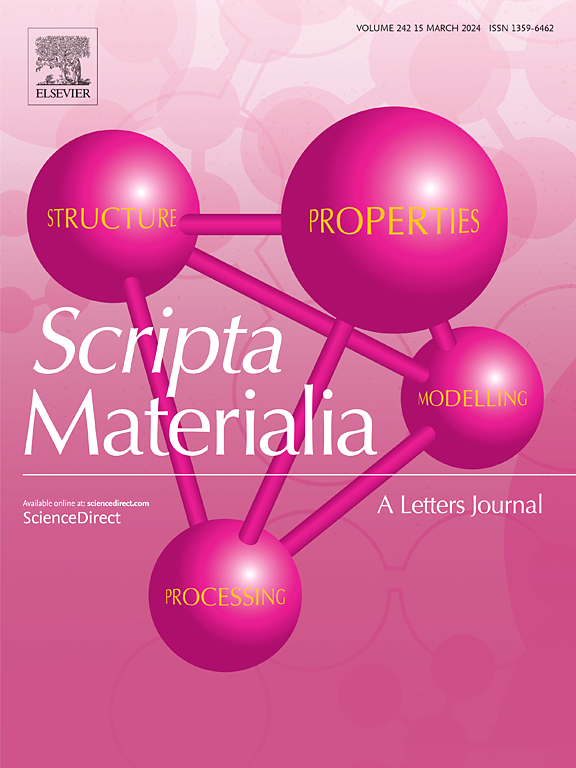掺sc的TiNi形状记忆合金的弹性热效应增强
IF 5.3
2区 材料科学
Q2 MATERIALS SCIENCE, MULTIDISCIPLINARY
引用次数: 0
摘要
我们报告了sc掺杂的TiNi形状记忆合金的巨大弹性热效应,证明了它们在固态冷却应用中的潜力。固溶处理的(Ti49.2Ni50.8)99.8Sc0.2合金的熵变为~ 74 J/kg·K,绝热温度变化(∆Tad)为37.41 K,但热循环稳定性较差。然而,在623 K下时效10小时后,合金的∆Tad保持在−31.56 K,性能系数(COPmaterials)为21。此外,在100次加载循环后,该材料表现出稳定的∆Tad为−15.05 K,并具有32的高COPmaterials。显微组织分析表明,B2-R-B19′马氏体两步相变,Ni4Ti3析出相和Sc2O3/ScO颗粒的形成强化了基体,增强了弹热效应的循环稳定性。这项研究展示了在sc掺杂的TiNi合金中实现巨大弹性热效应的途径,强调了它们在实用固态冷却技术中的前景。本文章由计算机程序翻译,如有差异,请以英文原文为准。
Enhanced elastocaloric effect in Sc-doped TiNi shape memory alloys
We report a giant elastocaloric effect in Sc-doped TiNi shape memory alloys, demonstrating their potential for solid-state cooling applications. The solution-treated (Ti49.2Ni50.8)99.8Sc0.2 alloy achieves a high entropy change of ∼74 J/kg·K and a adiabatic temperature change (∆Tad) of 37.41 K, though it suffers from poor thermal cycling stability. However, after ageing at 623 K for 10 hours, the alloy retains a high ∆Tad of −31.56 K with coefficient of performance (COPmaterials) of 21. Furthermore, it demonstrates a stable ∆Tad of −15.05 K and a high COPmaterials of 32 under reduced stress after 100 loading cycles. Microstructural analysis reveals that the two-step B2-R-B19′ martensitic transformation, combined with the formation of Ni4Ti3 precipitates and Sc2O3/ScO particles, strengthens the matrix and enhances the cycling stability of the elastocaloric effect. This study demonstrates a pathway to achieve a giant elastocaloric effect in Sc-doped TiNi alloys, underscoring their promise for practical solid-state cooling technologies.
求助全文
通过发布文献求助,成功后即可免费获取论文全文。
去求助
来源期刊

Scripta Materialia
工程技术-材料科学:综合
CiteScore
11.40
自引率
5.00%
发文量
581
审稿时长
34 days
期刊介绍:
Scripta Materialia is a LETTERS journal of Acta Materialia, providing a forum for the rapid publication of short communications on the relationship between the structure and the properties of inorganic materials. The emphasis is on originality rather than incremental research. Short reports on the development of materials with novel or substantially improved properties are also welcomed. Emphasis is on either the functional or mechanical behavior of metals, ceramics and semiconductors at all length scales.
 求助内容:
求助内容: 应助结果提醒方式:
应助结果提醒方式:


